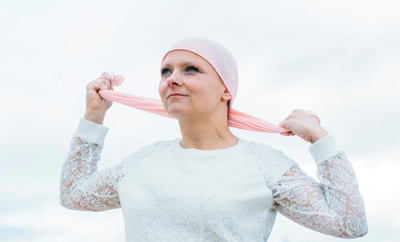
Skin Cancer Awareness and Prevention
by Lisa Butler and Catie Watson
What is the most common form of cancer? No, not prostate, breast, ovarian or lung; it’s skin cancer. Roughly 8,500 people in the U.S. are diagnosed with skin cancer every day.
Skin cancer is the number one cancer in young women between the ages of 25 and 29, and the numbers are rising. From 1970 to 2009, melanoma increased 800 percent among young women and 400 percent among young men.
Early stages of skin cancer can be subtle and may include changes in the skin such as new growths, moles, or patches that do not heal. Recognizing these signs is crucial for early detection and treatment.
New Growths or Moles
Look for any new spots on the skin or changes in existing moles, such as size, shape or color. Melanoma, for example, can appear as a new mole or a change in an existing one.
Actinic Keratosis
This condition manifests as rough, scaly patches on sun-exposed areas of the skin, which can be precursors to skin cancer. These patches may be pink, red or brown and can feel dry or rough.
Sores that Don’t Heal
Persistent sores or lesions that do not heal within a few weeks may indicate skin cancer. This is particularly true for squamous cell carcinoma.
Changes in Skin Texture
Skin may become rough, scaly or develop a scar-like appearance. These changes can be indicative of basal cell carcinoma or squamous cell carcinoma.
Color Changes
Look for spots that change color, especially if they become darker or develop multiple colors. This can be a sign of melanoma.
Combating skin cancer starts with at-home skin exams and yearly visits to the dermatologist. Generally, a doctor’s exam focuses on viewing any skin changes with moles or freckles; examination concentrates on unusual features such as asymmetry, uneven borders and change in color or size. Suspicious spots may be viewed under a hand-held microscope called a dermatoscope and a biopsy may be necessary to evaluate further.
Technological advances such as MelaFind® and smartphone apps such as UMSkinCheck, Mole Detector and SkinVision can give dermatologists and individuals some assistance with early detection. Nevertheless, the American Academy of Dermatology states, “Technology is a wonderful tool, but it should not replace the expertise of a board-certified dermatologist.”
The yearly visit to the dermatologist is important, and doing a monthly skin exam will help you stay one step ahead of skin cancers. The most common locations for melanoma on women are the legs and arms; it will either appear as a new mole or as an existing mole that has started to show change. Check your own skin regularly, or have a loved one help you, especially when you’re shaving or applying lotion, and take note of any new lumps or bumps. Ask your hairdresser to look out for any scalp moles changing color or shape. A regular gynecological exam can also allow your doctor to monitor any labial, vaginal or cervical changes.
The Skin Cancer Foundation warns about two types of ultraviolet rays: UVB (short-wave) rays and UVA (long-wave) rays. While UVB rays are known to be the cause of sunburn and skin cancer, there is growing evidence that UVA rays, which have more energy and penetrate the skin more deeply, have the potential to cause long-term damage in terms of skin aging and eye damage. And everyone, regardless of race, ethnicity or skin tone, can be affected, so this advice is universal.
Besides staying out of the sun altogether, the best way to protect your skin from damaging UV rays is through the correct application of sunscreen rated for UVA and UVB rays. This means applying a golf ball-size amount of sunscreen when you’re going to be out in the sun and then reapplying it every 90 minutes. UV rays can penetrate cloud cover, so it’s important to use sunscreen even on overcast days. Be aware that geography has an impact on sun exposure, with greater UV exposure closer to the equator and at higher altitudes, and increase the amount of sunscreen you use if you live in or travel to these locations.
Covering up is another way to protect your skin from the sun. Any type of clothing will lower UV exposure, but if you’re taking part in an outdoor activity such as gardening, biking or running on a regular basis, you may want to invest in clothing designed to provide maximum sun protection. When shopping for protective clothing, look for a UPF, or Ultraviolet Protection Factor, rating on the label. This indicates that special dyes and fabric treatments have been used to disrupt or absorb UV rays. As with the SPF rating on sunscreen, a higher UPF rating on clothing indicates better protection. Protective clothing is available with ratings of UPF50 and higher and is surprisingly fashionable.
Sources: aad.org, cancer.org, melafind.com, medicalnewstoday.com, nature.com and skinvision.com.







